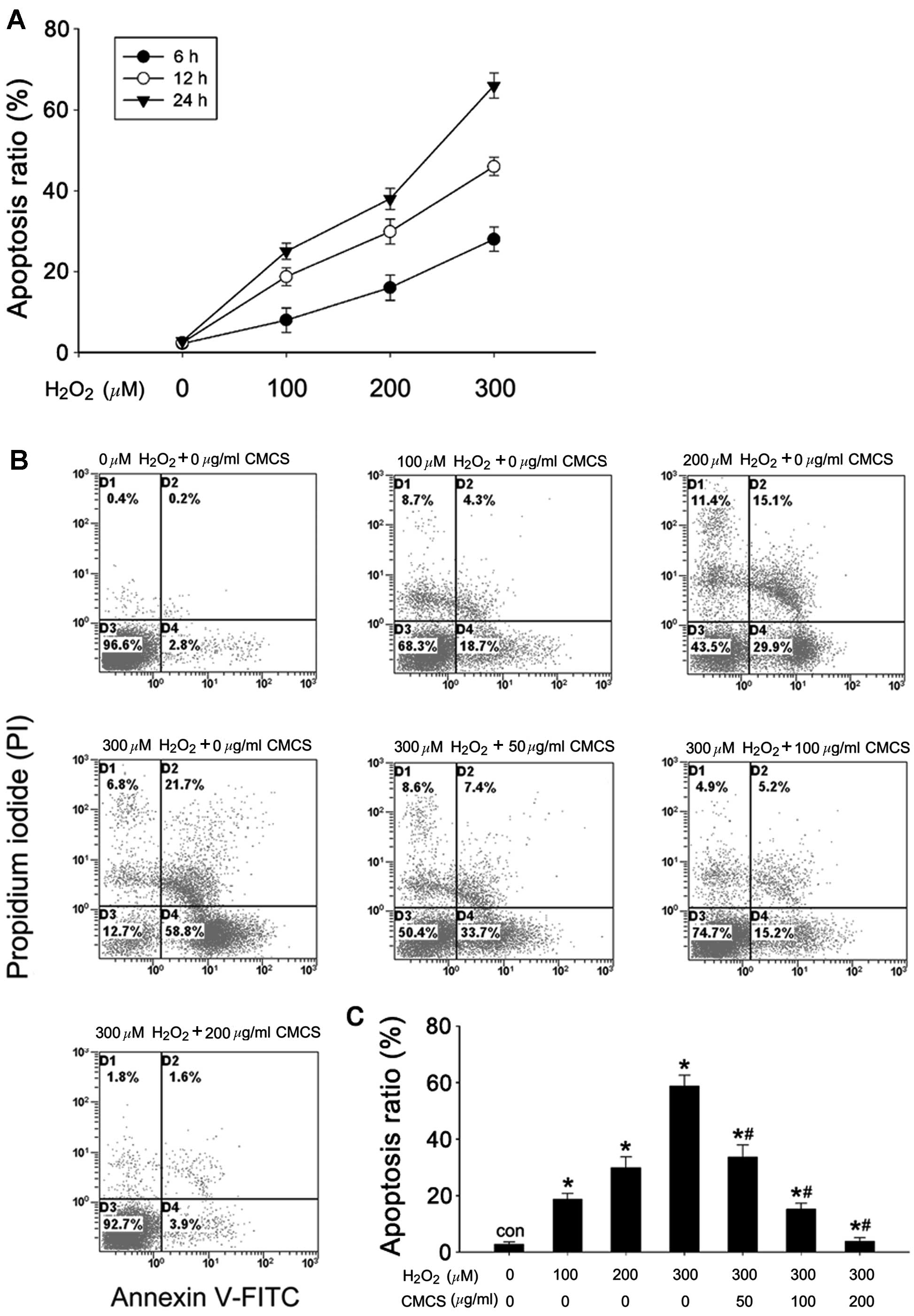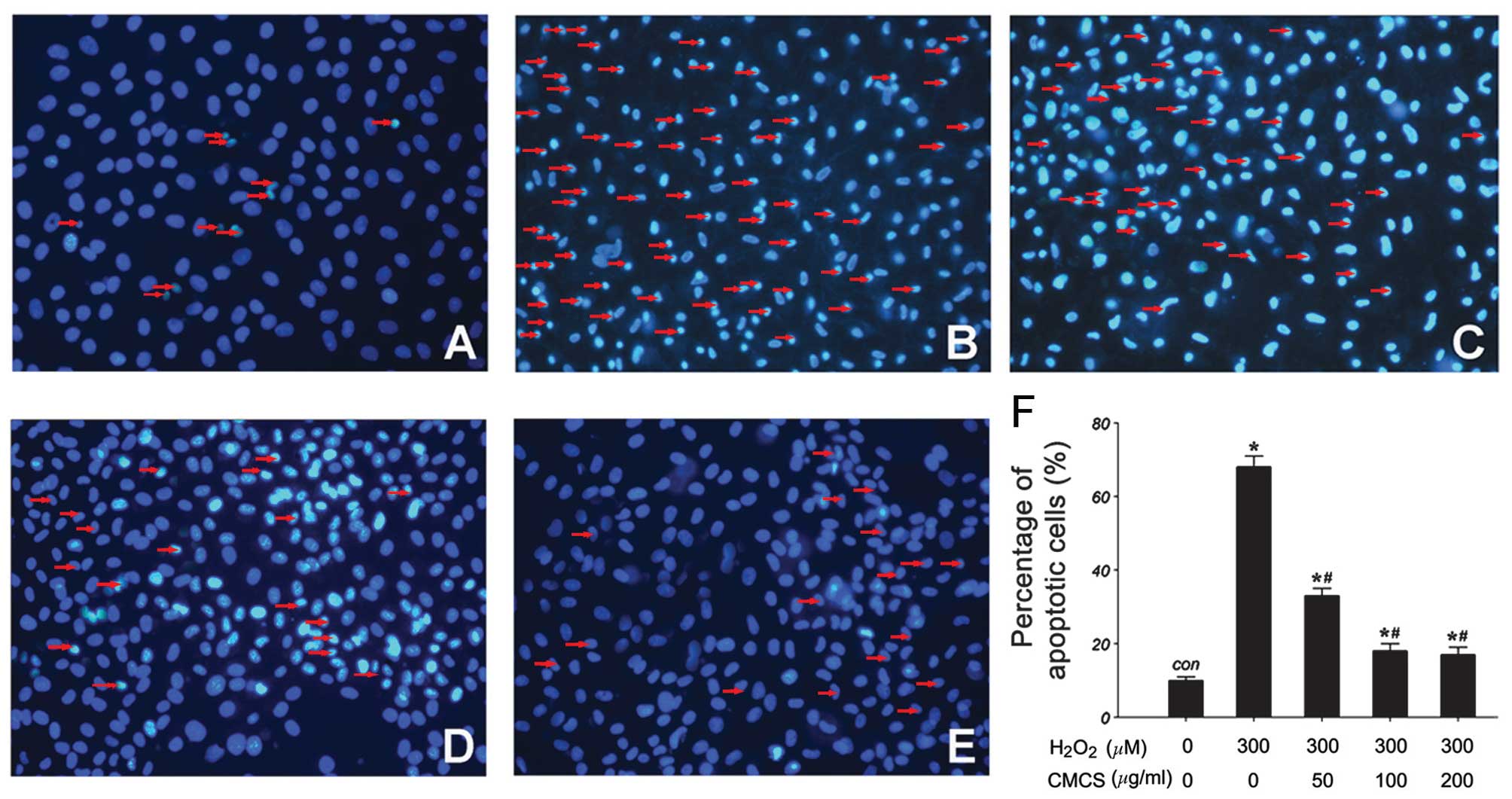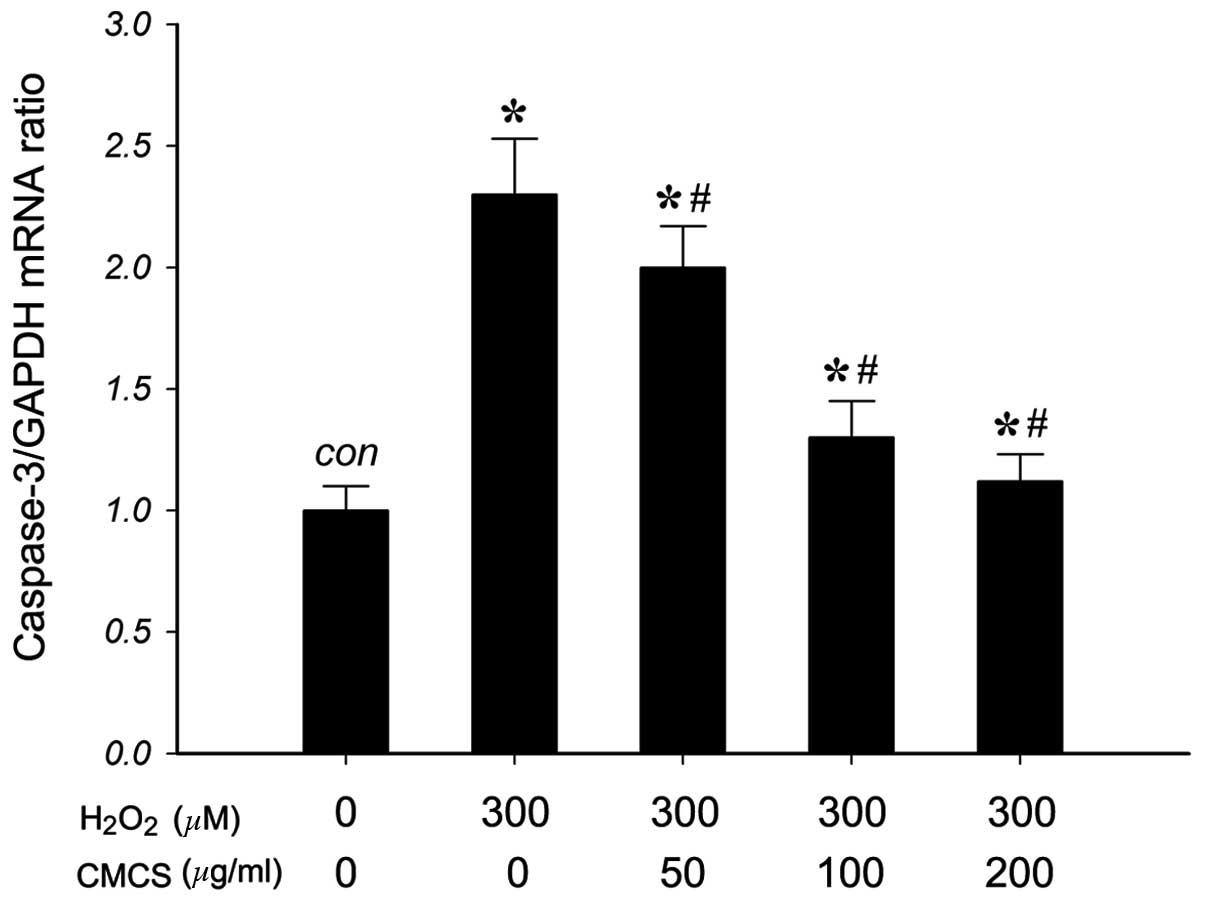|
1
|
Chen WH, Liu HY, Lo WC, Wu SC, Chi CH,
Chang HY, et al: Intervertebral disc regeneration in an ex vivo
culture system using mesenchymal stem cells and platelet-rich
plasma. Biomaterials. 30:5523–5533. 2009. View Article : Google Scholar : PubMed/NCBI
|
|
2
|
Kalichman L and Hunter DJ: The genetics of
intervertebral disc degeneration. Familial predisposition and
heritability estimation. Joint Bone Spine. 75:383–387. 2008.
View Article : Google Scholar : PubMed/NCBI
|
|
3
|
Schultz DS, Rodriguez AG, Hansma PK and
Lotz JC: Mechanical profiling of intervertebral discs. J Biomech.
42:1154–1157. 2009. View Article : Google Scholar : PubMed/NCBI
|
|
4
|
Zhao CQ, Wang LM, Jiang LS and Dai LY: The
cell biology of intervertebral disc aging and degeneration. Ageing
Res Rev. 6:247–261. 2007. View Article : Google Scholar : PubMed/NCBI
|
|
5
|
Zhao CQ, Jiang LS and Dai LY: Programmed
cell death in intervertebral disc degeneration. Apoptosis.
11:2079–2088. 2006. View Article : Google Scholar : PubMed/NCBI
|
|
6
|
Setton LA and Chen J: Cell mechanics and
mechanobiology in the intervertebral disc. Spine (Phila Pa 1976).
29:2710–2723. 2004. View Article : Google Scholar
|
|
7
|
Aguiar DJ, Johnson SL and Oegema TR:
Notochordal cells interact with nucleus pulposus cells: regulation
of proteoglycan synthesis. Exp Cell Res. 246:129–137. 1999.
View Article : Google Scholar : PubMed/NCBI
|
|
8
|
Iwashina T, Mochida J, Miyazaki T,
Watanabe T, Iwabuchi S, Ando K, Hotta T and Sakai D: Low-intensity
pulsed ultrasound stimulates cell proliferation and proteoglycan
production in rabbit intervertebral disc cells cultured in
alginate. Biomaterials. 27:354–361. 2006. View Article : Google Scholar
|
|
9
|
Vonk LA, Kroeze RJ, Doulabi BZ,
Hoogendoorn RJ, Huang C, Helder MN, Everts V and Bank RA: Caprine
articular, meniscus and intervertebral disc cartilage: an integral
analysis of collagen network and chondrocytes. Matrix Biol.
29:209–218. 2010. View Article : Google Scholar
|
|
10
|
Hsieh AH and Twomey JD: Cellular
mechanobiology of the intervertebral disc: new directions and
approaches. J Biomech. 43:137–145. 2010. View Article : Google Scholar :
|
|
11
|
Gruber HE and Hanley EN Jr: Analysis of
aging and degeneration of the human intervertebral disc. Comparison
of surgical specimens with normal controls. Spine (Phila Pa 1976).
23:751–757. 1998. View Article : Google Scholar
|
|
12
|
Kim KW, Ha KY, Lee JS, Rhyu KW, An HS and
Woo YK: The apoptotic effects of oxidative stress and antiapoptotic
effects of caspase inhibitors on rat notochordal cells. Spine
(Phila Pa 1976). 32:2443–2448. 2007. View Article : Google Scholar
|
|
13
|
Nosseri C, Coppola S and Ghibelli L:
Possible involvement of poly(ADP-ribosyl) polymerase in triggering
stress-induced apoptosis. Exp Cell Res. 212:367–373. 1994.
View Article : Google Scholar : PubMed/NCBI
|
|
14
|
Jiang B, Xiao W, Shi Y, Liu M and Xiao X:
Heat shock pretreatment inhibited the release of Smac/DIABLO from
mitochondria and apoptosis induced by hydrogen peroxide in
cardiomyocytes and C2C12 myogenic cells. Cell Stress Chaperones.
10:252–262. 2005. View Article : Google Scholar : PubMed/NCBI
|
|
15
|
Nagata S: Apoptotic DNA fragmentation. Exp
Cell Res. 256:12–18. 2000. View Article : Google Scholar : PubMed/NCBI
|
|
16
|
Singh M, Sharma H and Singh N: Hydrogen
peroxide induces apoptosis in HeLa cells through mitochondrial
pathway. Mitochondrion. 7:367–373. 2007. View Article : Google Scholar : PubMed/NCBI
|
|
17
|
Park JB, Lee JK, Park SJ, Kim KW and Riew
KD: Mitochondrial involvement in fas-mediated apoptosis of human
lumbar disc cells. J Bone Joint Surg Am. 87:1338–1342. 2005.
View Article : Google Scholar : PubMed/NCBI
|
|
18
|
Liu SQ, Qiu B, Chen LY, Peng H and Du YM:
The effects of carboxymethylated chitosan on metalloproteinase-1,
-3 and tissue inhibitor of metalloproteinase-1 gene expression in
cartilage of experimental osteoarthritis. Rheumatol Int. 26:52–57.
2005. View Article : Google Scholar : PubMed/NCBI
|
|
19
|
Chen Q, Liu SQ, Du YM, Peng H and Sun LP:
Carboxymethyl-chitosan protects rabbit chondrocytes from
interleukin-1beta-induced apoptosis. Eur J Pharmacol. 541:1–8.
2006. View Article : Google Scholar : PubMed/NCBI
|
|
20
|
He B, Liu SQ, Chen Q, Li HH, Ding WJ and
Deng M: Carboxymethylated chitosan stimulates proliferation of
Schwann cells in vitro via the activation of the ERK and Akt
signaling pathways. Eur J Pharmacol. 667:195–201. 2011. View Article : Google Scholar : PubMed/NCBI
|
|
21
|
Tao HY, He B, Liu SQ, Wei AL, Tao FH, Tao
HL, Deng WX, Li HH and Chen Q: Effect of carboxymethylated chitosan
on the biosynthesis of NGF and activation of the Wnt/β-catenin
signaling pathway in the proliferation of Schwann cells. Eur J
Pharmacol. 702:85–92. 2013. View Article : Google Scholar : PubMed/NCBI
|
|
22
|
Risbud MV, Guttapalli A, Stokes DG,
Hawkins D, Danielson KG, Schaer TP, Albert TJ and Shapiro IM:
Nucleus pulposus cells express HIF-1 alpha under normoxic culture
conditions: a metabolic adaptation to the intervertebral disc
microenvironment. J Cell Biochem. 98:152–159. 2006. View Article : Google Scholar : PubMed/NCBI
|
|
23
|
Cheng YH, Yang SH and Lin FH:
Themosensitive chitosan-gelatin-glycerol phosphate hydrogel as a
controlled release system of ferulic acid for nucleus pulposus
regeneration. Biomaterials. 32:6953–6961. 2011. View Article : Google Scholar : PubMed/NCBI
|
|
24
|
Tonomura H, Takahashi KA, Mazda O, Arai Y,
Inoue A, Terauchi R, Shin-Ya M, Kishida T, Imanishi J and Kubo T:
Glutamine protects articular chondrocytes from heat stress and
NO-induced apoptosis with HSP70 expression. Osteoarthritis
Cartilage. 14:545–553. 2006. View Article : Google Scholar : PubMed/NCBI
|
|
25
|
Kim KW, Ha KY, Lee JS, Rhyu KW, An HS and
Woo YK: The apoptotic effects of oxidative stress and antiapoptotic
effects of caspase inhibitors on rat notochordal cells. Spine
(Phila Pa 1976). 32:2443–2448. 2007. View Article : Google Scholar
|
|
26
|
Wang YC, Fu RH, Hsieh HJ, Chao HT and Kao
SH: Polyglycolic acid/chitosan glue and apoptosis of endometriotic
cells. Fertil Steril. 84:75–81. 2005. View Article : Google Scholar : PubMed/NCBI
|
|
27
|
Liu HT, Li WM, Xu G, Li XY, Bai XF, Wei P,
Yu C and Du YG: Chitosan oligosaccharides attenuate hydrogen
peroxide-induced stress injury in human umbilical vein endothelial
cells. Pharmacol Res. 59:167–175. 2009. View Article : Google Scholar : PubMed/NCBI
|
|
28
|
Koo HN, Jeong HJ, Hong SH, Choi JH, An NH
and Kim HM: High molecular weight water-soluble chitosan protects
against apoptosis induced by serum starvation in human astrocytes.
J Nutr Biochem. 13:245–249. 2002. View Article : Google Scholar : PubMed/NCBI
|
|
29
|
Earnshaw WC, Martins LM and Kaufmann SH:
Mammalian caspases: structure, activation, substrates, and
functions during apoptosis. Annu Rev Biochem. 68:383–424. 1999.
View Article : Google Scholar
|
|
30
|
Ruest LB, Khalyfa A and Wang E:
Development-dependent disappearance of caspase-3 in skeletal muscle
is post-transcriptionally regulated. J Cell Biochem. 86:21–28.
2002. View Article : Google Scholar : PubMed/NCBI
|
|
31
|
Budihardjo I, Oliver H, Lutter M, Luo X
and Wang X: Biochemical pathways of caspase activation during
apoptosis. Annu Rev Cell Dev Biol. 15:269–290. 1999. View Article : Google Scholar : PubMed/NCBI
|
|
32
|
Thornberry NA and Lazebnik Y: Caspases:
enemies within. Science. 281:1312–1316. 1998. View Article : Google Scholar : PubMed/NCBI
|
|
33
|
Rannou F, Lee TS, Zhou RH, Chin J, Lotz
JC, Mayoux-Benhamou MA, Barbet JP, Chevrot A and Shyy JY:
Intervertebral disc degeneration: the role of the mitochondrial
pathway in annulus fibrosus cell apoptosis induced by overload. Am
J Pathol. 164:915–924. 2004. View Article : Google Scholar : PubMed/NCBI
|
|
34
|
Sudo H and Minami A: Caspase 3 as a
therapeutic target for regulation of intervertebral disc
degeneration in rabbits. Arthritis Rheum. 63:1648–1657. 2011.
View Article : Google Scholar : PubMed/NCBI
|
|
35
|
Burlacu A: Regulation of apoptosis by
Bcl-2 family proteins. J Cell Mol Med. 7:249–257. 2003. View Article : Google Scholar : PubMed/NCBI
|
|
36
|
Zhao H, Yenari MA, Cheng D, Sapolsky RM
and Steinberg GK: Bcl-2 overexpression protects against neuron loss
within the ischemic margin following experimental stroke and
inhibits cytochrome c translocation and caspase-3 activity. J
Neurochem. 85:1026–1036. 2003. View Article : Google Scholar : PubMed/NCBI
|
|
37
|
Sudo H and Minami A: Regulation of
apoptosis in nucleus pulposus cells by optimized exogenous Bcl-2
overexpression. J Orthop Res. 28:1608–1613. 2010. View Article : Google Scholar : PubMed/NCBI
|
|
38
|
Takei N and Endo Y: Ca2+
ionophore-induced apoptosis on cultured embryonic rat cortical
neurons. Brain Res. 652:65–70. 1994. View Article : Google Scholar : PubMed/NCBI
|

















